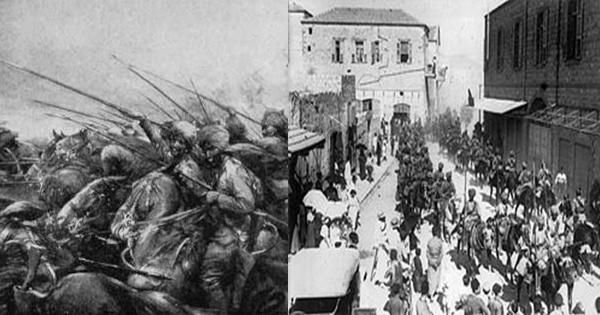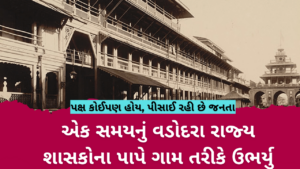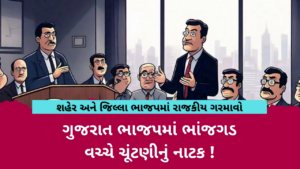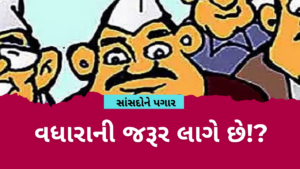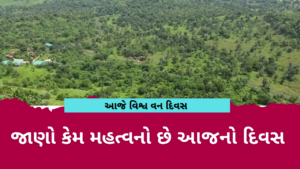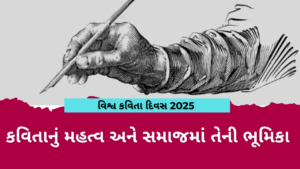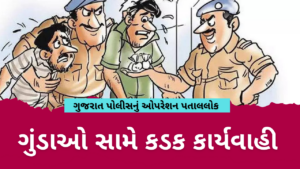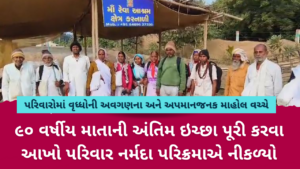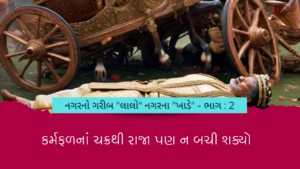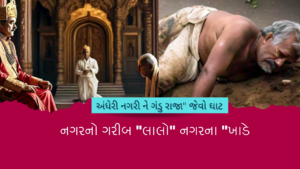As we are witnessing a tough tiff between Israel and Palestine, we are reminded of India’s strong friendship ties with Israel since many decades.
Although India was under British rule during the World Wars and was not a direct participant in the war, still Indian soldiers were involved in many battles on foreign shores. The Battle of Haifa, which took place in Israel during the last stages of the Palestine and Sinai campaigns of the First World War, was one of the most well-known and valiant fights fought by Indian soldiers on foreign land. On September 23, 1918, the crucial battle of Haifa took place. The Ottoman Empire’s troops and its German allies were destroyed in this fight by Indian soldiers from the British Indian troops, who fought valiantly.
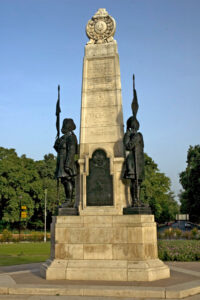
The Essential Roots of Haifa
The Western Front had come to a standstill as the troops of the contending nations dug in on their respective lands after the First World War had been waged with ferocity since 1914. However, in the Middle East, where the Eastern Front was being waged, forces were pushing swiftly to seize as many lands as they could.
The biggest governing empire in the Middle East, the Ottoman Empire, fought to defend its borders. They received assistance from their German friends in Europe. To retake the Suez Canal, an expeditionary army of Ottoman soldiers was advancing into Egypt with German support.
The British exploited the Suez Canal to deliver essential supplies from their colonies in Southeast Asia and the Subcontinent to their forces fighting in Europe, giving the canal enormous strategic significance. Germans believed that if they could take control of the Suez Canal and cut off the supply line, it would deal a devastating blow to British hopes of winning the war.
As a result, in 1915, German and Ottoman forces launched a war in Palestine and the Sinai, invading what was then British-controlled territory in the Sinai Peninsula. In the Battle of Rafa in 1917, the British Army’s Desert Column was successful in retaking the Sinai Peninsula. After conquering Affulah and Nazareth, Allied forces advanced and surrounded Ottoman army in the Judean Hills.
However, for any future planned progress by the British-led Egyptian Expeditionary Forces, the capture and liberation of Haifa was crucial. In order to keep fighting, it was intended to be utilised to land supplies for the Egyptian and British forces.
The Trajectory
For this attack, the 5th Cavalry Division was constructed. There were three brigades in it. A British Yeomanry regiment made up one brigade. There were two regiments of British Indian cavalry. This cavalry division is commanded by the ‘Jodhpur Lancers’ cavalry regiment, under the command of Major Dalpat Singh Shekhawat and Captain Aman Singh Rathore. Three cavalry regiments, namely those from Hyderabad, Jodhpur, and Mysore, made up the third brigade, which was known as the ‘15th Cavalry Brigade’.
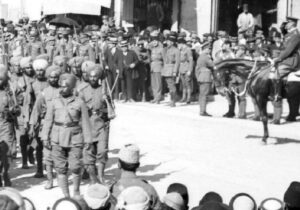 Since Captain Aman Singha Rathore rallied the troops and was instrumental in achieving Haifa’s freedom from the Ottoman Empire following the shooting of Major Dalpat, he is known as the Haifa hero. On September 23, 1918, the ‘15th Cavalry Brigade’ was ordered to conquer Haifa. The Ottoman was overthrown and Haifa was taken by the ‘Jodhpur Lancers’.
Since Captain Aman Singha Rathore rallied the troops and was instrumental in achieving Haifa’s freedom from the Ottoman Empire following the shooting of Major Dalpat, he is known as the Haifa hero. On September 23, 1918, the ‘15th Cavalry Brigade’ was ordered to conquer Haifa. The Ottoman was overthrown and Haifa was taken by the ‘Jodhpur Lancers’.
The town was then surrounded by the ‘Mysore Lancers’, who would then attack from the East and North. On the slopes of Mount Carmel, a squadron of the Mysore Lancers, the Sherwood Rangers Yeomanry, and British artillery batteries engaged Austrian light artillery weapons during the day. They made a difficult journey and stole the firearms from Mount Carmel.
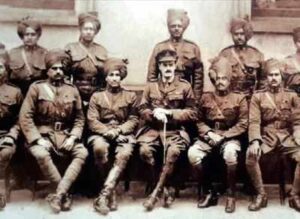 On the other side, the ‘Jodhpur Lancers’ unleashed a vicious assault on the German machine gunners. They attempted to storm the Ottoman stronghold, though moving forward was challenging due to the quicksand along the riverbed. They then thought of manoeuvring to the left on the lower slopes of Mount Carmel and amazed the Ottomans with an attack. They were successful.
On the other side, the ‘Jodhpur Lancers’ unleashed a vicious assault on the German machine gunners. They attempted to storm the Ottoman stronghold, though moving forward was challenging due to the quicksand along the riverbed. They then thought of manoeuvring to the left on the lower slopes of Mount Carmel and amazed the Ottomans with an attack. They were successful.
German and Ottoman soldiers were both actively attacked by ‘Jodhpur Lancers’. At the conclusion of this fight, Indian forces had taken control of Haifa with the help of the ‘Mysore Lancers’. 34 Indian troops were injured, and eight of them were killed. More than 1200 men from German and Ottoman forces were captured by them.
Seeds of Independence
Indians got encouraged and pleased when word of this triumph reached their shores. It gave Indians a sense of independence and self-assurance that they could manage their own nation without any British oversight. The Indian freedom cause received a new boost as a result of the troops’ faith in their ability to win the Battle of Haifa.

